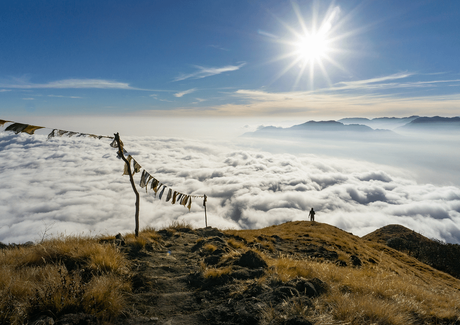
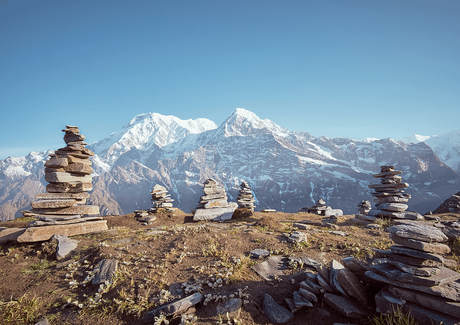
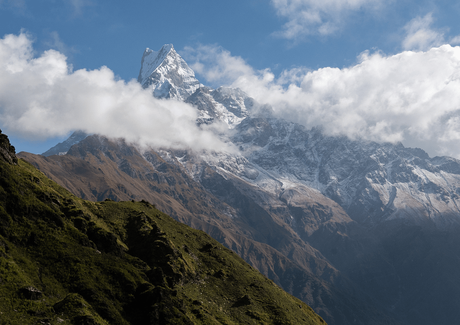
Nepal is undoubtedly the best destination for tourists. With its natural richness, this country has been able to attract thousands of visitors every year. The country isn’t just famous for nothing. Along with the natural resources, it is abundant in culture, tradition, diverse climate, and hospitable people. And one of those places is Fishtail Mountain trek also popularly known as Mardi Himal Trek.
You might have seen the photos on social media platforms and read some blogs about Nepal and the Himalayas. Also, you might have been convinced that you must trek in the Himalayas. With several high-altitude destinations, you might be confused about choosing a suitable trek. There are numerous options, including Everest Base Camp, Annapurna Sanctuary, Everest Three Pass, Shey-Phoksundo, Tilicho, and other destinations. But which will be the most adventurous for you?
Out of all those options, the Fishtail mountain Trek is at the top of your list. But is it a suitable trek for you? What should you expect? What gear do you need?
This article will provide a comprehensive guide to the Fishtail mountain Trek. We’ll cover everything from the route and difficulty level to what to pack and when to go. So, if you’re considering trekking in Nepal, keep reading. The Fishtail mountain Trek is waiting for you!
Overview of the Fishtail Mountain Trek

If you’re looking for an adventure off the beaten path, the Fishtail Mountain Trek is waiting for you. This trek offers stunning views of the Himalayas without all the tourists.
You’ll start your journey in Pokhara, a large town located about 200 kilometers away from Kathmandu. From there, you’ll hike through the beautiful Nepalese countryside to the Mardi Himal Base Camp. Along the way, you’ll see winding rivers, terraced rice fields, and imposing Himalayan peaks.
The trek can be done in 5-7 days, so it’s perfect for anyone with a limited time. Keep in mind that this is a challenging trek, so you should be in good shape before you attempt it.
Planning and Preparing for the Fishtail Mountain Trek
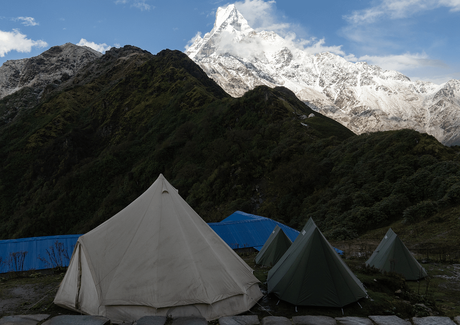
Now that you’re excited to go on the trek, it’s time to start planning and preparing.
The first thing you need to do is get yourself in gear physically. The trek is considered a moderate hike, but you’ll still be covering some serious ground—so make sure your body is up for it. Start by hiking and running trails in your area to build up your endurance. You’ll also want to focus on strength training, as you’ll carry a good amount of weight on your back.
Next, it’s time to gear up mentally. Make sure you’re well-read on what to expect on the trek. The last thing you want is for any surprises to ruin your hike. Familiarize yourself with the route, altitude, climate, and any other potential challenges you may face.
The more prepared you are mentally and physically, the smoother your trek will be.
Essential Gear for the Fishtail Mountain Trek

The Fishtail Mountain Trek is a challenging but rewarding trek that takes you through some of Nepal’s most stunning scenery. To make the most of your trip, it’s important to be prepared with the right gear. Here are some essential items to pack for the Fishtail Mountain Trek:
- Hiking boots: A good pair of hiking boots is essential for any trek, and the Fishtail Mountain Trek is no exception. Make sure your boots are comfortable and broken before you set out on the trail.
- Warm clothing: Even in the summer, nights can be cold at high altitudes. Pack a few warm layers you can put on when the temperature drops. Also, remember to carry a sleeping bag with you.
- Rain gear: Nepal is known for its monsoon season, so rain gear is a must when trekking in this country. Be sure to pack a waterproof jacket, pants, rain covers for your backpack, and hiking boots.
- Sun protection: The sun can be intense at high altitudes, so don’t forget to pack sunscreen, hats, and sunglasses.
- First aid kit: A small first aid kit is always a good idea when embarking on any outdoor adventure. Be sure to include essential items like bandages, antiseptic wipes, and pain relievers, for you will never know what happens during the trek.
What to Expect From the Fishtail Mountain Trek?
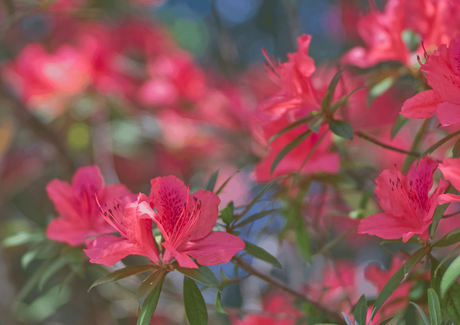
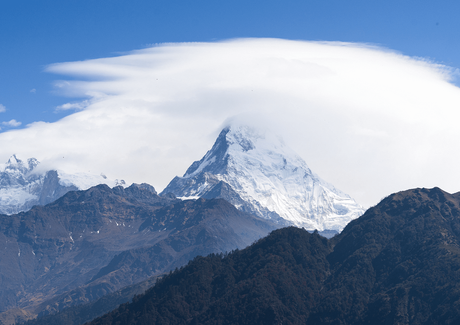
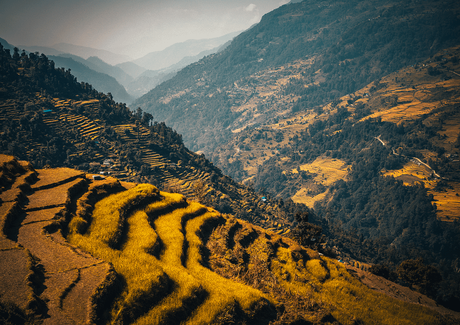
The Fishtail Mountain trek is a journey through the foothills of the Himalayas. It’s a moderate trek and suitable for anyone who is reasonably fit and has some trekking experience.
You can expect to see some of the most breathtaking scenery in the world as you make your way through the hills and valleys. The trail winds through pristine forests, past rushing rivers, and spectacular waterfalls, and up to the snow-capped peaks of theFishtail Mountain.
Besides, the region is home to one of the endangered bird species, Danphe Monal, also called Lophophorus impejanus. Besides, the dense forest of Rhododendron, juniper, and pine will give you the vibes of the Tropical Tundra Climate.
This is not an arduous trek, but it is, of course, a challenging one. You’ll be rewarded with incredible views and an unforgettable experience.
Highlights of the Fishtail Mountain Trek
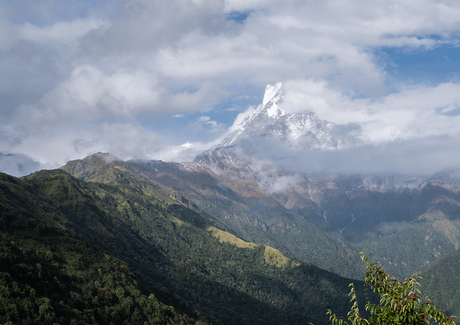
The Fishtail Mountain Trek is a hidden gem and offers some of the most incredible views of the Himalayas that you’ll find in Nepal. The trail takes you through rhododendron forests, glacial rivers, and quaint villages before culminating in a startlingly close view of Machapuchare, or “Fishtail Mountain.”
One of the best parts of the trek is that it is not overcrowded like other treks so you won’t be fighting for space on the trail or dealing with large crowds at the campsites. You’ll have plenty of opportunities to take in the scenery and appreciate the beauty of the mountains.
The Fishtail Mountain Trek is an excellent option for those looking for an off-the-beaten-path trekking experience in Nepal.
Your Stops During Fishtail MountainTrek
Your trek to Fishtail Mountain Trek will be a wonderful experience for sure. But you should know the map of the routes you’re going through. We have prepared a skeleton of stops that you can reach in the course of your hike.
- Drive to Kande or Phedi and Trek to Deurali
- Trek to Low Camp
- High Camp
- To Base Camp
- Trek to Siding Village
- Back to Lumre
- Return to Pokhara/Kathmandu
Drive To Kande or Phedi and Trek To Deurali
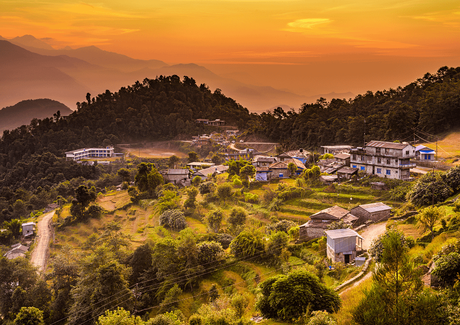
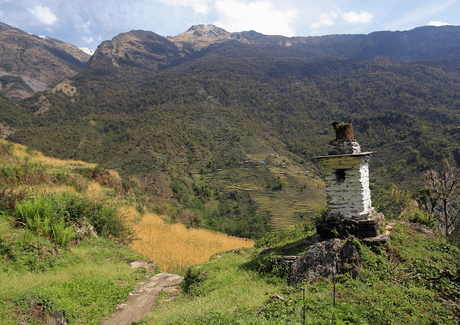
Getting to Kande or Phedi is the first step of your Fishtail Mountain Trek. You will reach Phedi by vehicle and have to trek for one and a half hours to Dhampus. From there, your next stop will be Pothana Village and then Deurali. It takes around 2 hours of walking from Pothana to reach Deurali, which is situated at an altitude of 2200 meters.
Trek To Low Camp
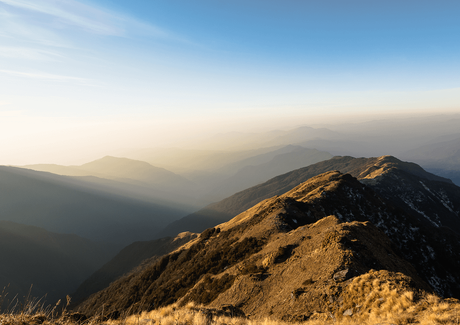
From Deurali, you will walk to a place at 2900 meters altitude, the Low Camp of Mardi Himal Base Camp. It takes around 4 hours to hike to reach Low Camp and you will be passing across the dense forest of Rhododendrons and pine trees. You can be at Low Camp for a night.
High Camp
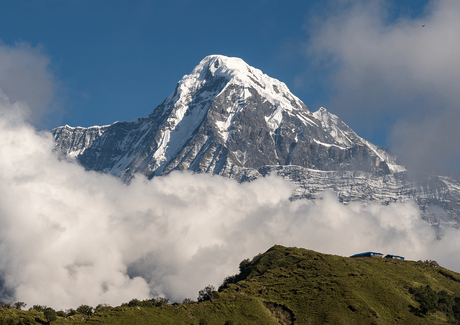
The next stop is at the high camp, which is situated at 3585 meters above sea level. The total time to reach High Camp from Low Camp is one and a half hours, but you will be thrilled with the scenes of Mardi Himal, Annapurna South, Gangapurna, Hiuchuli, and Machhapuchhre. The dense rhododendron forest never leaves you around, and the main attraction of this region is Danphe, an endangered pheasant species.
Trek To Mardi Himal Base Camp
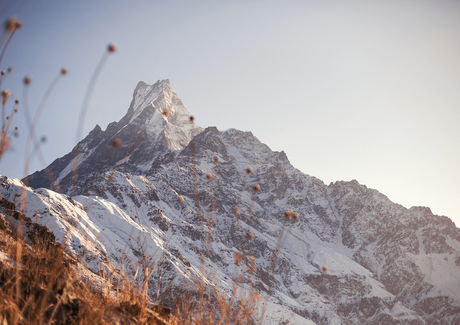
It is the most challenging route in theFishtail Mountain region. The trails are sloppy and rugged, which leads you to Mardi Himal Base Camp at 4500 meters. You will be face-to-face with the south side of Mount Annapurna and can be in natural touch with Annapurna Sanctuary. The other peaks like Hiunchuli and Machhapuchhre are the main attraction of this place.
Trek Back To Siding
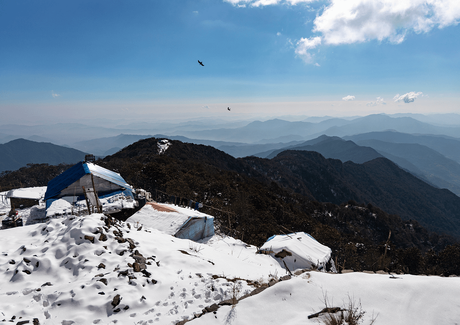
Now, you pull yourself down the hill, and the route leads to Siding village. The place is facilitated with a homestay service where you can stay overnight. The traditional village reflects Nepali culture and tradition, and you will have the Nepali cuisine Dal-Bhaat at a local kitchen.
Trek To Lumre
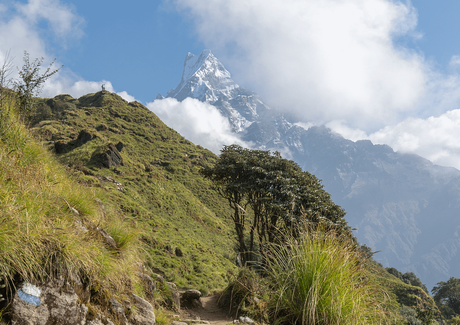
After you stay overnight at Siding, you will be heading downhill to Lumre – in the course of your hike, you will pass across the Kalimati and Ghalel. There is also a provision for driving to the wilderness before heading back to Pokhara.
Popular Side Trips Along the Fishtail Mountain Trek
When it comes to side trips, you’re spoiled for choice along the Fishtail Mountain. Here are a few of the most popular options:
Poon Hill
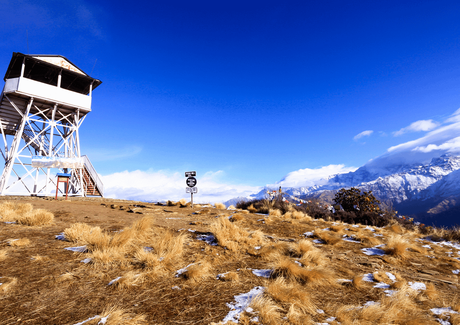
The first is to Poon Hill, which at 3,210 meters (10,531 feet) is the highest point you can reach without a special permit. From here, you’ll get amazing views of the Annapurna massif, as well as Dhaulagiri and Machapuchhare. You can make this side trip in a day, or you can extend it and camp overnight.
Muktinath
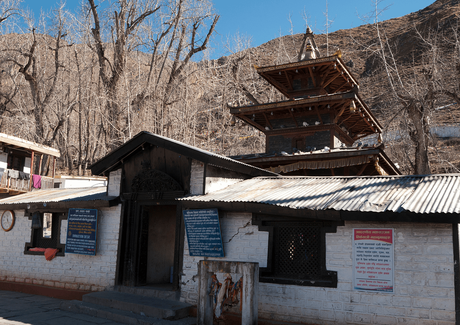
Another popular option is to trek up to Muktinath Temple, a Hindu shrine that is also an important pilgrimage site. It’s said that you will be purified if you bathe in the temple’s holy waters. The temple is about 3,800 meters (12,467 feet) above sea level, so it’s a bit of a climb, but it’s worth it for the views.
Tilicho Lake
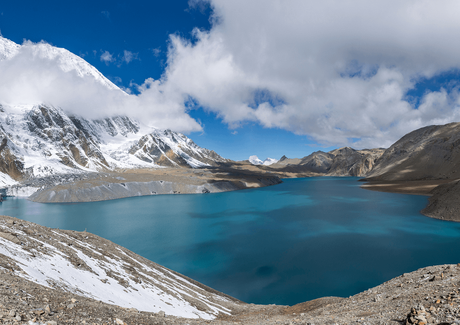
The next option is Tilicho Lake, the world’s highest lake at 4,949 meters (16,138 feet). It’s a bit of a hike to get there – about 7 hours – but it’s worth it for the views. Not to mention that you can say you’ve been to the highest lake in the world!
Annapurna Sanctuary
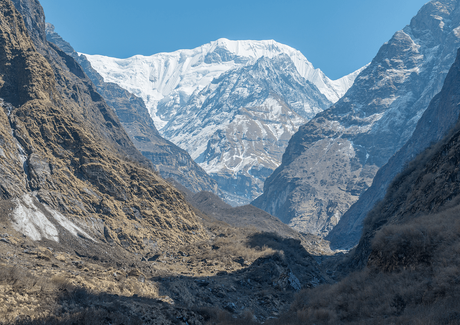
Last but not least, you can go for a trek to Annapurna Sanctuary, which is in direct contact with the Fishtail Mountain Trek route. If you are looking for an extended trek, you can surely take your body and soul there.
Tips for Trekking Safely in the Fishtail Mountain Region
Here are some general tips to keep in mind when trekking in the Fishtail Mountain region:
- Make sure you have the proper gear. This includes good-quality hiking boots, a rain jacket, and a daypack.
- Educate yourself on the area you’ll be trekking in. This means reading up on the trails and weather conditions and knowing your fitness level and limits.
- Be prepared for changes in the weather. The weather can change quickly in the mountains, so make sure you have layers you can put on or take off as needed.
- Listen to your body. If you’re feeling tired, take a break. And if something doesn’t feel right, don’t hesitate to turn back.
- Be respectful of the environment. This means sticking to trails, not littering, and not disturbing any wildlife you may encounter.
Where to Stay on the Fishtail Mountain Trek
The Fishtail Mountain Trek is one of the most popular treks in Nepal. It is a short and relatively easy trek that offers stunning views of the Himalayas. The best hike is from October to November and March to April. There are a few different options for where to stay on the Fishtail Mountain Trek.
You can either camp or stay in one of the Tea Houses along the way. Camping is an excellent option if you want to save money, but it does require some extra gear. Tea Houses are more expensive, but they offer comfortable beds and hot meals.
Here is a breakdown of the different accommodation options on the Fishtail Mountain Trek:
Camping
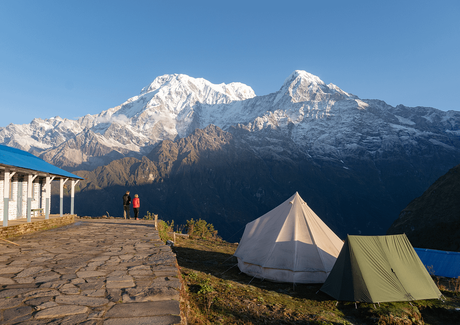
Pros – cheaper, more adventurous, closer to nature.
Cons – requires extra gear, can be cold at night.
Tea Houses

Pros – comfortable beds, hot meals, no need for extra gear.
Cons – more expensive, less adventurous.
And the unique accommodation that you should not miss is Homestay. They are a more authentic experience and offer a glimpse into Nepali village life. They are often family-run and provide basic accommodation and meals.
No matter where you decide to stay, be sure to arrive early in the day to get settled in before dark. And don’t forget to pack your sense of adventure!
Extra Activities to Enjoy During the Fishtail Mountain Trek
In addition to the stunning views and amazing scenery, there are plenty of other activities to enjoy during the Fishtail Mountain Trek. Here are a few of our favorites:
Hiking
Of course, one of the best things to do during any trek is hiking! The Fishtail Mountain Trek offers opportunities for both easy and challenging hikes. The low base camp, middle base camp, and high base camp are some insights into the famous hiking sites around the region.
Photography
With such incredible views, the Fishtail Mountain Trek is a photographer’s paradise. With the majestic view of the Himalayas and the waterfalls, villages, and forests, Fishtail Mountain Trek brings heaven to you. Be sure to bring your camera and snap some shots of the stunning landscapes.
Sightseeing
Bird/Plant Watching: The Fishtail Mountain Trek is home to various birds, including some rare species. You might even spot a Himalayan griffon or lammergeier if you’re lucky! The Fishtail Mountain region is home to a number of rare and endemic plants. Keep your eyes peeled for some exciting flowers and foliage.
Star gazing
Have you ever laid down on the ground and watched the clear sky? If not, you can probably try this during your trek to Fishtail Mountain. The clear night skies make for excellent stargazing conditions. You might even spot a shooting star or two if you’re lucky!
Challenges for Fishtail Mountain Trek
As mentioned before, Fishtail Mountain trek is not the most arduous trek but challenging. While the destination can be an eye-pleasing attraction center for many tourists, it also comes with some difficulties. Here are some of them:
Rugged Routes
You will find steep and sloppy landscapes and pathways during the last session of your trek at Mardi Himal High Base Camp. The low and middle camps are much more convenient to summit than the upper ones. Similarly, you cannot expect a well-topped road or the seasonal one since your destination is located in rural Nepal. It will be wise to come with a good hiking boot and clothes for your safe hike to this region.
High-Altitude
Fishtail Mountain Trek takes you to a high altitude of 5,587 meters above sea level so that air can be thin in this area. Many visitors suffer from altitude sickness since oxygen levels deplete at high altitudes.
Weather
Weather can be harsh in the winter season in the Fishtail Mountain region. The high and middle base camp is frequently under the snow in the winter, and it will be cold outside. The temperature can go below 0 degrees Celsius, so having warm clothes like thermals and windproof/waterproof jackets are highly recommended. For sleeping, you will be in need of sleeping bags.
Cost Required For Fishtail Mountain Trek
Fishtail Mountain Trek is one of the cheapest high-altitude treks that you will find in Nepal. The average cost for Fishtail Mountain Trek starts from $600. The charge is $3 per night for a two-bedroom service room for accommodation.
But the cost can differ depending on what you do and how many days you choose to stay on the trek. If you are willing to extend your hike to Annapurna Circuit or Muktinath and Tato Pani, you should probably have an extra few hundred dollars. Extending the trek to Annapurna will also bring the task of getting permits like ACAP and TIMS Card, which will cost around $17 to $25.
But if you are only willing to go forFishtail Mountain Trek, then around $600 to $1000 will be sufficient.
So there you have it—everything you need to know to have a fantastic trekking experience in the Fishtail Mountain Trek. You will surely have an amazing time if you’re well-prepared and go into the trek with the right attitude. Enjoy the incredible views and make some unforgettable memories!
Frequently Asked Questions
Here are the lists and answers to some frequently asked questions regarding the Fishtail Mountain Trek. Let’s go through it.
How Many Days Package Is Fishtail Mountain Trek?Generally, the total days of the Fishtail Mountain Trek will be around nine days in the package. It means that you will have 7 days from Pokhara to reach Fishtail Mountain and return back. The remaining two days are for traveling from/to Kathmandu.
But for some trekkers, it might take longer than the designated one – it depends on the physical fitness and endurance you have in your body. That’s why we recommend having stamina and energy for high-altitude treks.
September, October, and November are perfect for trekking Fishtail Mountain. Since Autumn falls in these months, a high volume of tourists visit Nepal and opt for trekking. The sky is clear in these months, so you will have a cinematic view of the natural richness, including the Himalayas and forests.
Fishtail Mountain Trek is not as risky as the Everest Three Passes trek, but the winters are challenging. The snow-covered pathways and the cold temperatures are some of the difficulties you will face during the winter in Fishtail Mountain Trek. So it will be a good idea to plan for tackling the challenges ahead.
Do I Need A Guide For A Safe Trek to Mardi?
If you are a newbie in Nepal or Fishtail Mountain region and are afraid to be alone during your trek, then it will be better if you hire a guide. Hiring a guide will cost you around $25 to $30 per day, but money does not come before your safety. Similarly, guides can help you communicate with the local people and learn more about the place and the origin, culture, and people.
Moreover, you also can hire porters if you opt to take more equipment and luggage with you. Hiring a porter may cost you anywhere around $17 to $25.
